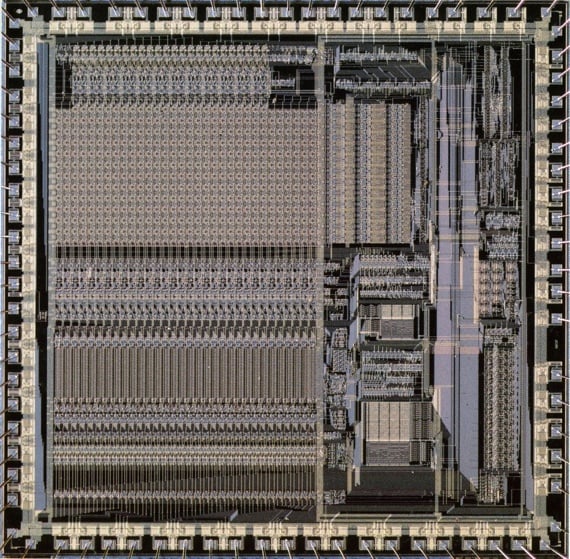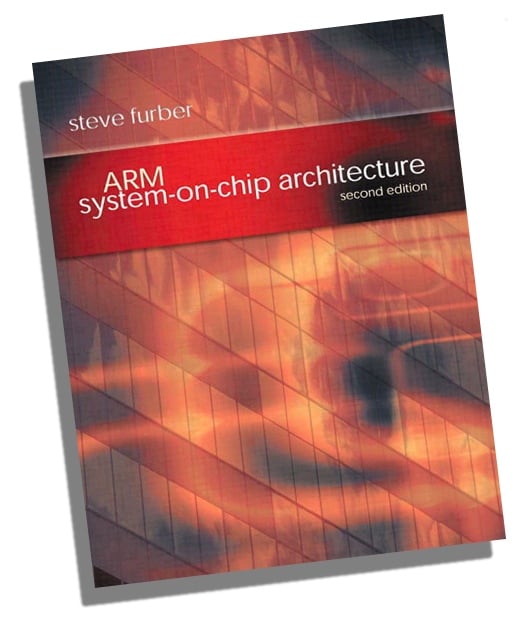This article is more than 1 year old
ARM creators Sophie Wilson and Steve Furber
Part Two: the accidental chip
Call to ARMs
The first ARM used 25,000 transistors. "It was a really small, simple piece of design," says Furber.
Today one of the most significant features of the ARM family is its low power consumption. But that hadn't been an initial goal, according to Furber. “We designed the ARM for an Acorn desktop product, where power isn't of primary importance. But it had to be cheap. Cheap meant it had to go in a plastic package, plastic packages have a fairly high thermal resistance, so we had to bring it in under 1W.”

The original 3µm ARM chip
The power test tools they were using were unreliable and approximate, but good enough to ensure this rule of thumb power requirement. When the first test chips came back from the lab on the 26 April 1985, Furber plugged one into a development board, and was happy to see it working perfectly first time.
Deeply puzzling, though, was the reading on the multimeter connected in series with the power supply. The needle was at zero: the processor seemed to be consuming no power whatsoever.
As Wilson tells it: “The development board plugged the chip into had a fault: there was no current being sent down the power supply lines at all. The processor was actually running on leakage from the logic circuits. So the low-power big thing that the ARM is most valued for today, the reason that it's on all your mobile phones, was a complete accident."
Wilson had, it turned out, designed a powerful 32-bit processor that consumed no more than a tenth of a Watt.

From the horse's mouth...
“Running on leakage” also happened to be an appropriate description of Acorn outside the lab. To staunch the haemorrhaging finances, Italian computer manufacturer Olivetti stepped in with an initial cash injection in February 1985. By the end of the year, Olivetti had taken a controlling interest, effectively buying the company.
“Olivetti wasn't told about the ARM when they bought Acorn,” Steve Furber remembers. When they found out, he says, “they didn't know what to do with it”. Wilson and Furber did, and were able to push through the ARM’s initial commercial appearance in the ARM Development System, a specialist add-on to BBC Micro costing £4500.
